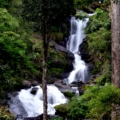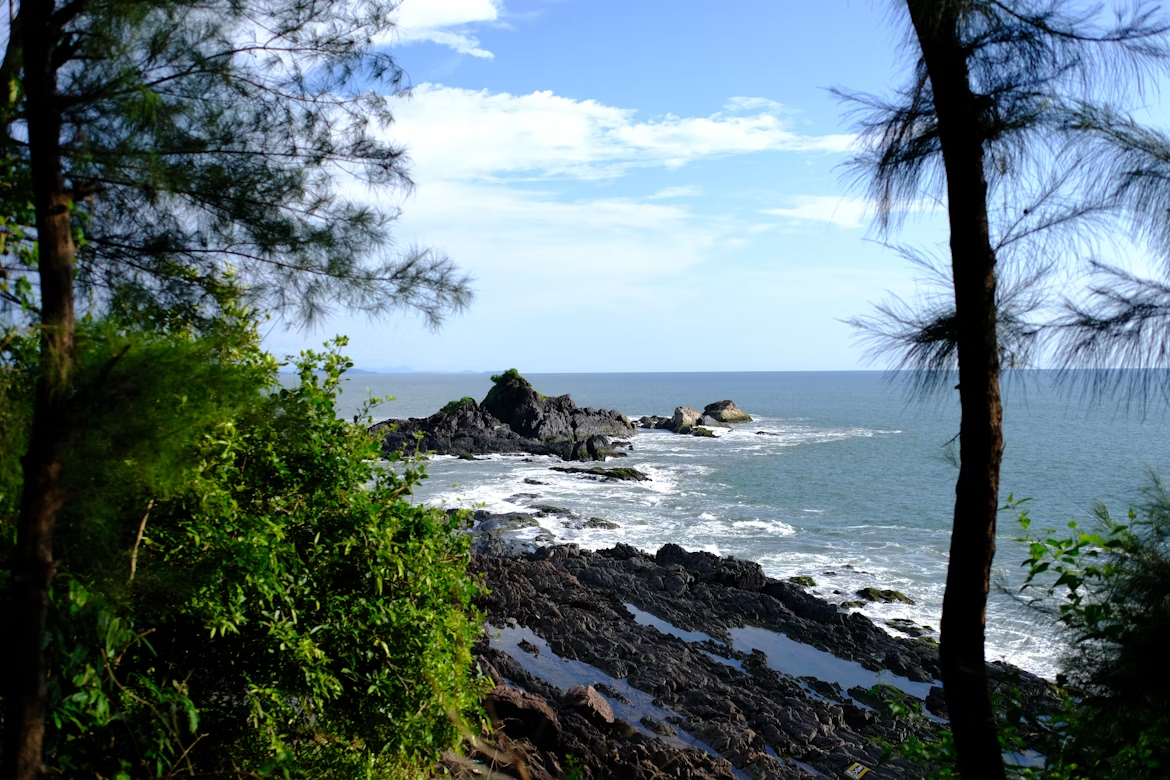Andharban Jungle Trek: Ultimate Monsoon Trekking Guide
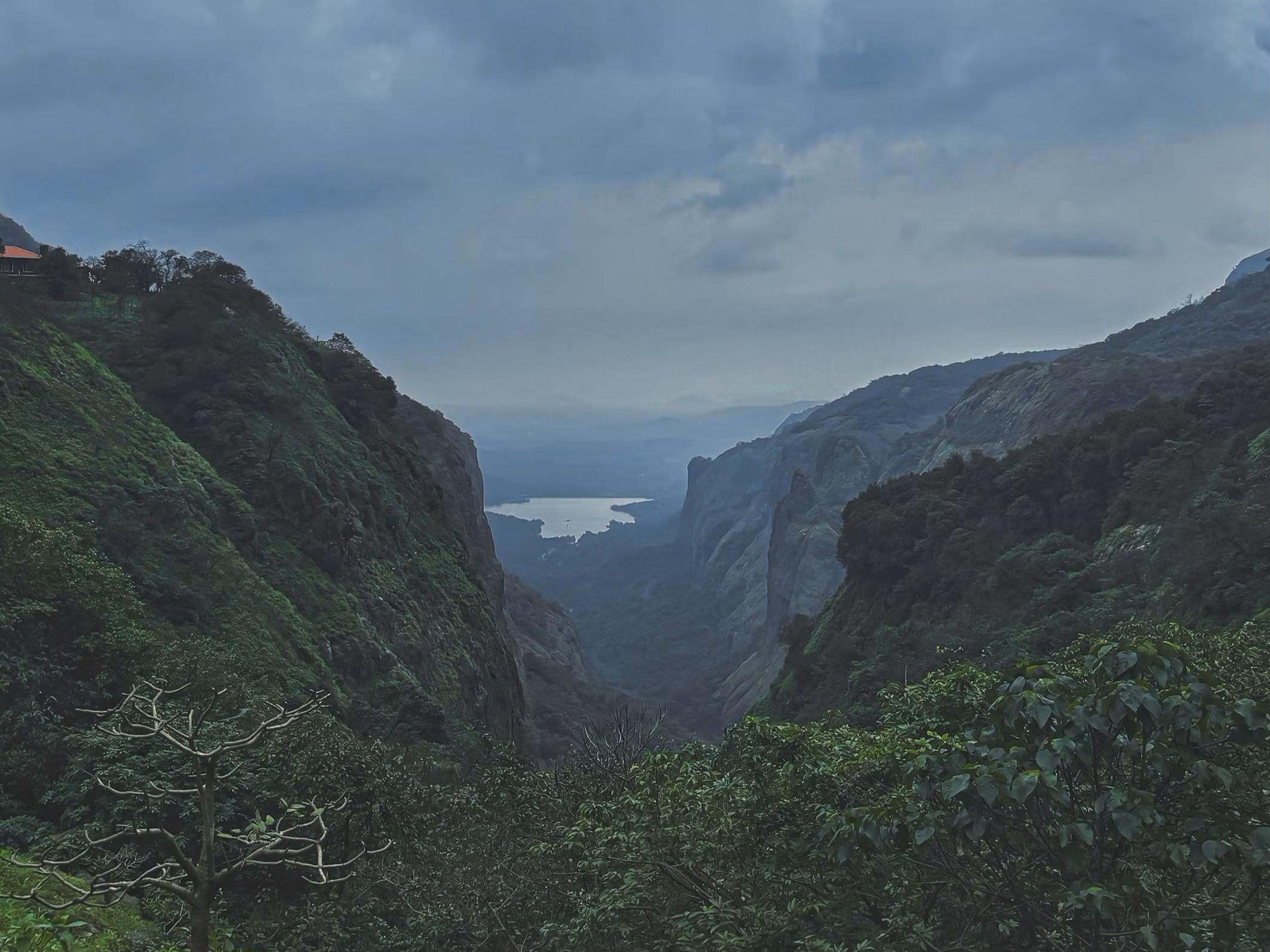
Monsoon in Maharashtra brings a spectacular transformation to the Western Ghats. The parched hills turn lush green, waterfalls roar back to life, and a mystical fog embraces the mountains. Among the many monsoon trek options in the region, the Andharban Jungle Trek stands out as a true gem. Its name literally means “Dark Forest,” and that’s exactly what awaits you, a journey through dense, mysterious woodland that feels straight out of a fantasy novel.
In this Blog
The Magical World of Andharban
The Andharban Jungle Trek cuts through the heart of Sahyadri’s most pristine forests. Unlike typical summit treks, this one-way trail takes you on a predominantly descending route from Pimpri village to Bhira Dam, which forms the core of the Andharban trek route. What makes it extraordinary is how the forest transforms during the rainy season.
When monsoon clouds gather over this mystical path, the forest awakens. Moss-covered rocks glisten with moisture. Tiny streams appear overnight, cutting across the trail. The canopy above becomes so thick that even during heavy rainfall, you’ll feel only gentle droplets making their way through layers of leaves. This natural umbrella creates the perfect environment for trekking, even in peak monsoon.
Trek Experience: What to Expect Along the Way
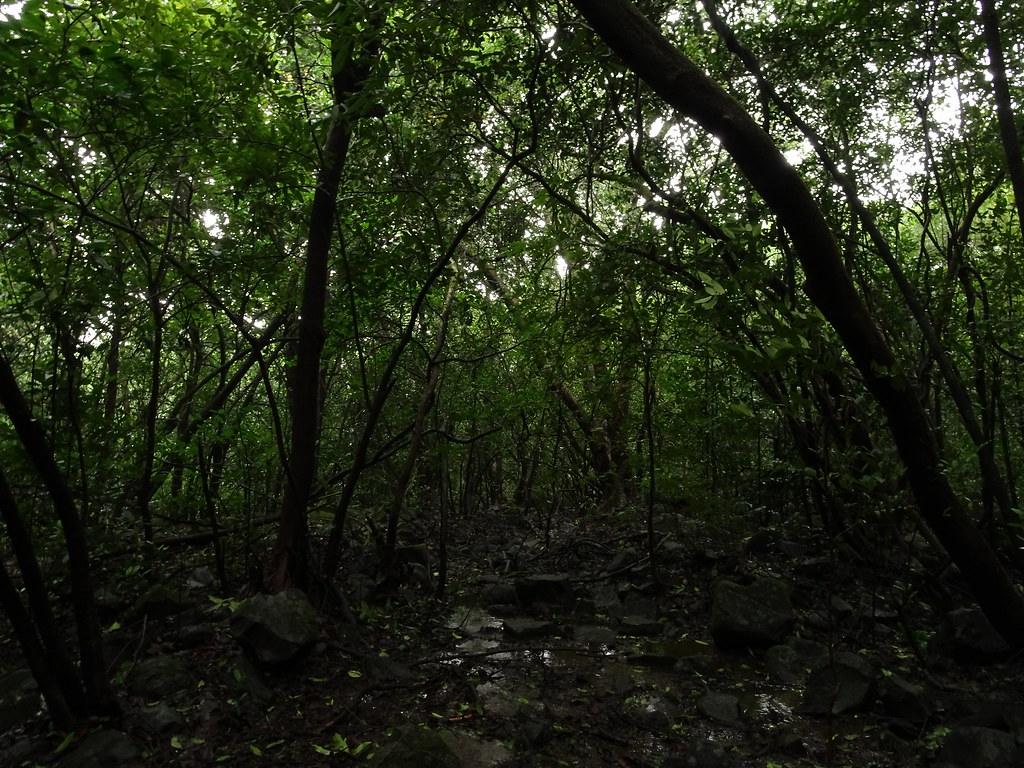
The Andharban Jungle Trek adventure begins at Independence Point near Pimpri village. This starting point marks a key segment in any Andharban trek itinerary, offering stunning views of the valley, often filled with clouds that look like a white ocean below. These panoramic vistas are your last glimpse of open sky before plunging into the forest.
As you descend further, the “dark forest” experience truly begins. Sunlight filters through in narrow beams, creating spotlight effects on the forest floor. The foliage becomes denser, and the world around you transforms into varying shades of green.
About midway through the Andharban trek, you’ll encounter a magnificent bamboo section where tall culms create natural tunnels and corridors. The hollow bamboo stalks create unusual acoustics, sometimes whistling when wind passes through them, adding to the enchanted forest atmosphere.
One of the trek’s highlights is crossing multiple water streams. During peak monsoon, these innocent-looking streams transform into gushing water channels requiring careful navigation. Some trekkers remove their shoes for better grip on slippery rocks, while others hop across using stepping stones. These crossings add a thrilling dimension to the Andharban Jungle Trek, especially when water rushes just inches below your feet!
The forest floor itself is a marvel during the monsoon. Colorful fungi sprout from decaying logs, bright orange forest crabs scuttle between rocks, and occasionally, you might spot endemic amphibians that emerge only during the rainy season. The air carries the distinctive petrichor, that earthy fragrance released when rain hits dry soil, mixed with the sweet scent of wildflowers blooming in response to rainfall.
As you approach the final stretch, the forest gradually thins out, offering glimpses of the Bhira Dam and reservoir, a stunning reward after the forest journey. The contrast between the dark canopy you’ve been walking under and the sudden open view of water surrounded by hills creates a perfect finale.
How to Reach the Starting Point
From Pune:
- By Car: Approx. 2.5–3 hours via Mulshi Road
- By Bus: Buses are available to Mulshi or Tamhini Ghat area, but they may not take you all the way to Pimpri village
- Local Jeeps: Available from major junctions like Paud or Mulshi
From Mumbai:
- By Car: Around 4 hours via Lonavala or Khopoli and Tamhini Ghat
- By Train, Jeep: Take a train to Lonavala or Pune, then continue by shared cab or local transport
Since it’s a one-way trek, plan return transport from Bhira Dam accordingly. Either hire a local vehicle for pickup or trek with a group that arranges drop-off and pick-up at both ends
The Hidden Wonders of Andharban
What sets the Andharban Jungle Trek apart from other monsoon trek trails is the constant surprise element. The trail reveals new secrets with each visit, depending on rainfall patterns and timing.
Early monsoon (late June) brings carpets of tiny wildflowers across forest clearings. Mid-monsoon (July–August) shows the forest at its wettest and wildest, with mini waterfalls appearing along rock faces. Late monsoon (September) offers clearer weather windows with magical mist that rises from the valley floor.
The biodiversity explosion is another marvel. Ferns unfurl their delicate fronds, mushrooms pop up overnight in fascinating shapes and colors, and insects emerge in dazzling variety. Lucky trekkers might spot giant Malabar squirrels leaping between trees or hear the distinctive call of the racket-tailed drongo echoing through the forest.
One particularly magical phenomenon occurs when sunlight breaks through after rain, thousands of water droplets hanging from leaves create a sparkling effect throughout the forest, like natural fairy lights illuminating your path. These glimpses make Andharban trekking not just scenic but immersive.
Navigating the Andharban Trek Trail
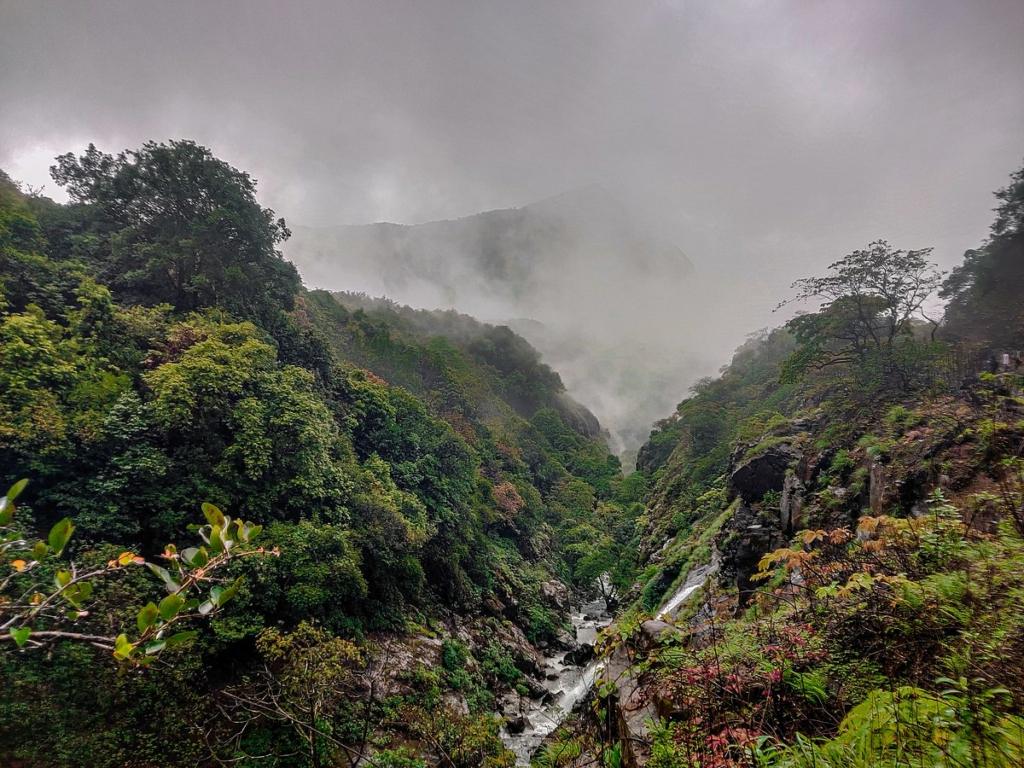
While the Andharban Jungle Trek is predominantly a descent, don’t underestimate its challenges. The terrain varies considerably throughout the trek. Some sections feature well-defined trails with natural stone steps, while others require careful navigation across unmarked forest floors where the path seems to disappear into vegetation.
Particularly challenging is the “root section”, a steep descent where tree roots form a natural but slippery staircase. Experienced trekkers often recommend sidesteps or a zigzag approach for better stability here.
The forest canopy occasionally breaks to reveal sudden drops offering breathtaking valley views. These spots are perfect for photography but require caution, especially when wet. The mist creates dramatic scenes but can reduce visibility dramatically within minutes.
During heavy rainfall periods, temporary waterfalls cascade down adjacent rock faces, creating impromptu water curtains you’ll walk through. These unexpected shower points add to the adventure but require waterproofing your essentials.
Trek Stories: Memorable Moments
Ask anyone who’s completed the Andharban Jungle Trek, and they’ll have a personal tale to share. Some recall the silence when the group pauses to rest, a profound forest quietude broken only by distant bird calls and water droplets. Others remember the sudden appearance of a sunbeam penetrating the canopy like a spotlight, illuminating a single flowering plant in dramatic fashion.
Many trekkers describe the “mist moment”, when clouds suddenly roll in through the trees, enveloping everything in white. Within seconds, visibility drops to a few feet, and fellow trekkers ahead appear as silhouettes. These ethereal minutes, when the forest seems to exist between worlds, often become the most cherished memories.
Then there’s the classic leech story nearly every Andharban trekking enthusiast experiences, discovering a tiny hitchhiker only at the end of the trek, usually followed by amused laughter rather than concern. These harmless forest dwellers are simply part of the authentic monsoon trek experience.
Some groups encounter spontaneous celebrations at Bhira Dam when multiple trekking groups converge after completing their respective journeys through the forest. The camaraderie between strangers sharing stories of their Andharban Jungle Trek adds a beautiful social dimension to an otherwise nature-focused experience.
Forest Folklore and Cultural Significance
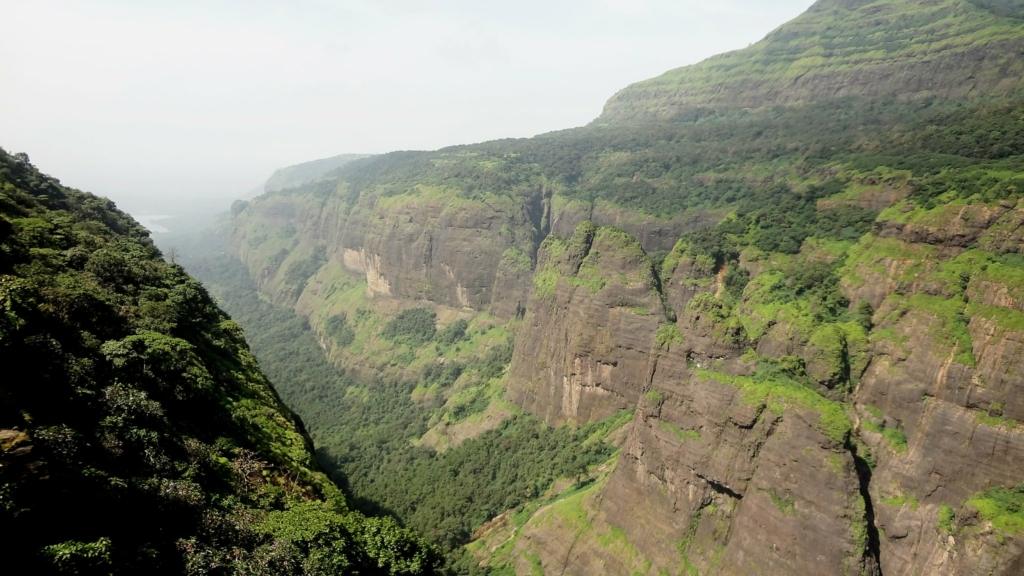
The forests of Andharban hold cultural significance for local communities. According to regional folklore, these dense woods were once pathways for messengers traveling between forts during the Maratha period. The ability to navigate through such challenging terrain was considered a valuable skill for warriors.
Villagers from surrounding areas still gather specific medicinal plants from the forest periphery during the post-monsoon season. Various herbs that grow only during the rainy months are used in traditional remedies, though conservation efforts now regulate such activities.
Some old-timers in nearby villages speak of the forest’s “breathing”, how the mist rising from valleys resembles the forest exhaling during dawn and dusk. These poetic observations reflect the deep connection local communities have maintained with these ancient woodlands.
Where to Rest After Your Adventure
After completing this memorable Andharban Jungle Trek, you might want to extend your stay in the region. The Andharban trek location is close to Lonvala, which offers several StayVista properties that provide comfort amidst nature such as; Le Sutra Great Escapes – Udaan, Manthan, Arihant Villa, Villa Aangan and Villa Tesoro.
These serene villas offer rejuvenation after your forest adventure, making your Andharban trek itinerary both thrilling and relaxing.
The Calling of Andharban
The Andharban Jungle Trek isn’t just another trail, it’s an immersion into a world where rain creates magic instead of inconvenience. Every droplet transforms the landscape, every mist brings mystery, and every step takes you deeper into a forest that seems alive and breathing.
For those craving an offbeat yet accessible monsoon trek, the Andharban Jungle Trek promises the perfect blend of beauty, challenge, and forest magic. With the right gear, some planning, and a spirit of adventure, you’ll come back not only drenched in rain but also with unforgettable memories.
Banner Image Credit: Yogesh Sharma via Unsplash



